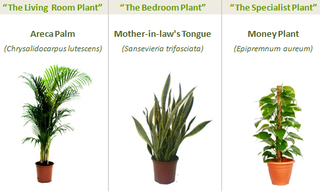The theme for World Soil Day 2019 is "Stop soil erosion, Save our future."
This day promoted by the Food and Agriculture Organization (FAO) has, since 2012, hoped to raise awareness about the role healthy soil plays in "sustaining healthy ecosystems and human well-being." Ensuring "Good Health and Well-Being" #SDG3 as well as life on land #SDG15 can be achieved through healthy soil that produces healthy food and healthy people. Tending the soil can improve mental health and well-being. Thus the process of ensuring soil health - organic gardening and organic farming can ensure mental health. Healthy minds are vital for people to thrive.
As the member-states of the United Nations gather in Madrid at COP25 to discuss climate change, reports submitted there indicate that land degradation is a major driver of climate change.
Now while it's important to de-carbonize our economies and "Keep Oil in the Soil and Coal in the Hole." A major way that people and policy can help curb emissions and environmental degradation is by curbing soil erosion and restoring and rejuvenating the soil. Intensive organic agriculture and mixed agriculture especially cultivation amidst man-made mixed fruit forests or rice fields that farm fresh water fish in fields can help restore soil.
These fields of trees can provide shade on a hot day, fix soil and protect it from erosion as well as fixing water and carbon. The leaves that fall from them can bring in nutrition and organic matter to improve soil. This is permaculture harnessed to horticulture and agriculture underpinned by chemical-free organic restorative and regenerative cultivation practices. Agroforestry demonstrated by young Costa Rican farmer Alexander Retana, shows that we can increase green cover and produce food comfortably.
As Vandana Siva put it in the Year of the Soil in 2015 when we saw the signing of the Paris Climate Treaty, "we are nothing without living soil. ...If we make peace with the soil we make peace between people."
As the article in the Hindu Business Line indicates
In short, deforestation, which in itself raises carbon emissions by 25 per cent, along with all human activities pursued on the land, is the real cause of climate change in the form of extreme weather conditions like intense and untimely rains, floods, soil erosion, and high temperatures.Our lifestyle, the food we eat and from where we source it has an impact on the life of the planet and its soil. Unsustainable agricultural practices, industrial agriculture, deforestation caused by greed for more agricultural and grazing lands (Amazon and the Equatorial Rainforest in Southeast Asia being two key examples of vital primordial forests cut down or burnt down).
Ecological farming - restorative organic farming that puts organic matter back into the soil to keep it living instead of making a zombie out of it with petrochemical fertilizers and pesticides, can be the difference between life and death of the soil and of the human race.
We need to #StopSoilErosion in all its forms and unsustainable agricultural practices and unsustainable development are key reasons for dying soil.
via GIPHY
In a world where micro-hunger - the hunger for essential nutrients is as devastating to a different set of people as hunger is to the poorer populations, ensuring that the soil is healthy ensures that there is Zero Hunger #SDG2. Nutritious food can be produced through healthy and nutritious soil. Saving the soil can ensure that all the sustainable development goals are achieved. Smallholder farmers in the developing world must be engaged in preserving and restoring soil health. Making young farmers, women farmers, and small-scale farmers - usually marginalized and impoverished by industrial agriculture - should be made stakeholders who can benefit from ecological farming that restores soil health and ensures soil is safe from erosion. Organic ecological agriculture can be incorporated into climate adaptation and climate action measures that can be funded and trained by climate finance and green tech transfer. These marginalized farmers can help #SaveOurFuture by saving the soil. Thus we can ensure social justice and climate justice by protecting soil.



















